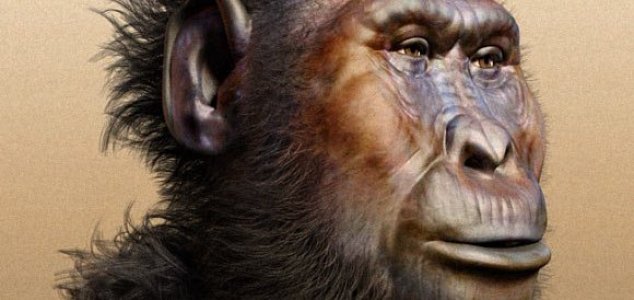Palaeontology
March 10, 2016 · 34 comments
34 comments

Raw meat consumption required the use of stone tools. Image Credit: CC BY-SA 3.0 Cicero Moraes
Before the advent of cooking however our meat-eating ancestors somehow managed to eat raw meat all the time with teeth very similar to our own - so what was their secret ?
Daniel Lieberman, a paleoanthropologist from Harvard University, discovered first-hand just how difficult it actually is for a human to eat a piece of raw meat.
"You put it in your mouth and you chew and you chew and you chew and you chew, and nothing happens," he said. "It's almost like a piece of chewing gum."
In a new study which involved analyzing the number of chews needed to process meat that had been prepared through different methods, Lieberman and his colleage Katherine Zink, a human evolutionary biology researcher, concluded that the key to how our ancestors dined on raw meat was their ability to use stone tools to slice and grind up the meat beforehand.
"We didn't just start eating meat," said Lieberman. "We had to invent some technology in order to be able to do it."
With their mouths free from constant chewing our ancestors would have also been able to take up other, more useful activities during mealtimes such as talking.
"If you no longer need to maintain the big jaws and big teeth, it allows natural selection to choose for other performance benefits that improve fitness and survival," said Zink.
Source: LA Times | Comments (34)
How did our ancestors consume raw meat ?
By T.K. RandallMarch 10, 2016 ·
 34 comments
34 comments
Raw meat consumption required the use of stone tools. Image Credit: CC BY-SA 3.0 Cicero Moraes
Raw meat is notoriously difficult to chew, so how did our prehistoric ancestors manage to do it ?
Unlike other carnivorous animals such as wolves which have teeth that can slice through raw meat, human teeth are primarily adapted for chewing and crushing like a mortar and pestle, meaning that we have to cook meat first so that our teeth can break it down when we eat it.Before the advent of cooking however our meat-eating ancestors somehow managed to eat raw meat all the time with teeth very similar to our own - so what was their secret ?
Daniel Lieberman, a paleoanthropologist from Harvard University, discovered first-hand just how difficult it actually is for a human to eat a piece of raw meat.
"You put it in your mouth and you chew and you chew and you chew and you chew, and nothing happens," he said. "It's almost like a piece of chewing gum."
"We didn't just start eating meat," said Lieberman. "We had to invent some technology in order to be able to do it."
With their mouths free from constant chewing our ancestors would have also been able to take up other, more useful activities during mealtimes such as talking.
"If you no longer need to maintain the big jaws and big teeth, it allows natural selection to choose for other performance benefits that improve fitness and survival," said Zink.
Source: LA Times | Comments (34)

The Unexplained Mysteries
Book of Weird News
AVAILABLE NOW
Take a walk on the weird side with this compilation of some of the weirdest stories ever to grace the pages of a newspaper.
Click here to learn more

Support us on Patreon
BONUS CONTENTFor less than the cost of a cup of coffee, you can gain access to a wide range of exclusive perks including our popular 'Lost Ghost Stories' series.
Click here to learn more
United States and the Americas
Israel, Palestine and the Middle-East
Earth, Natural Disasters and the Environment
Space: Astronomy and Astrophysics
Total Posts: 7,768,596 Topics: 325,030 Members: 203,772
Not a member yet ? Click here to join - registration is free and only takes a moment!
Not a member yet ? Click here to join - registration is free and only takes a moment!



































Please Login or Register to post a comment.